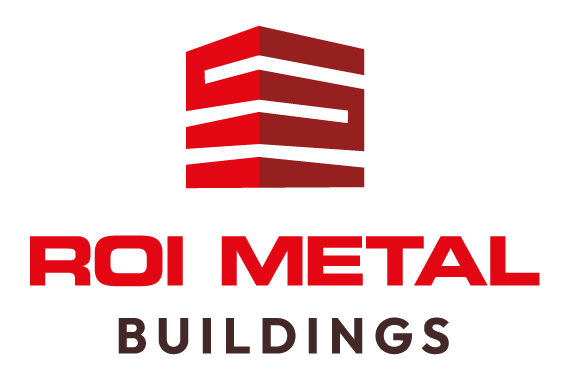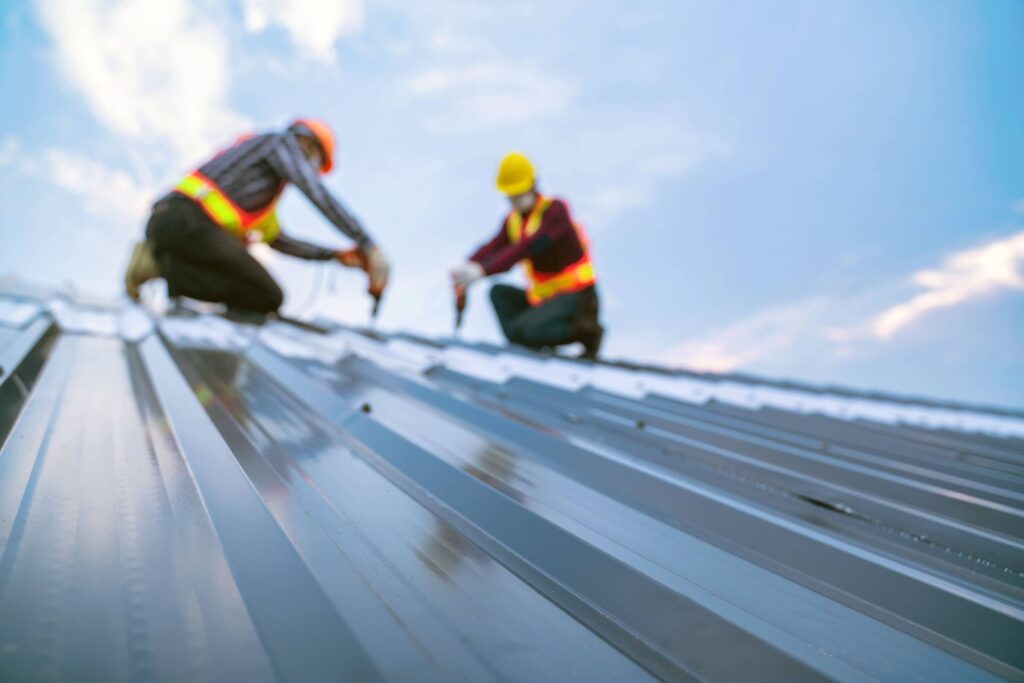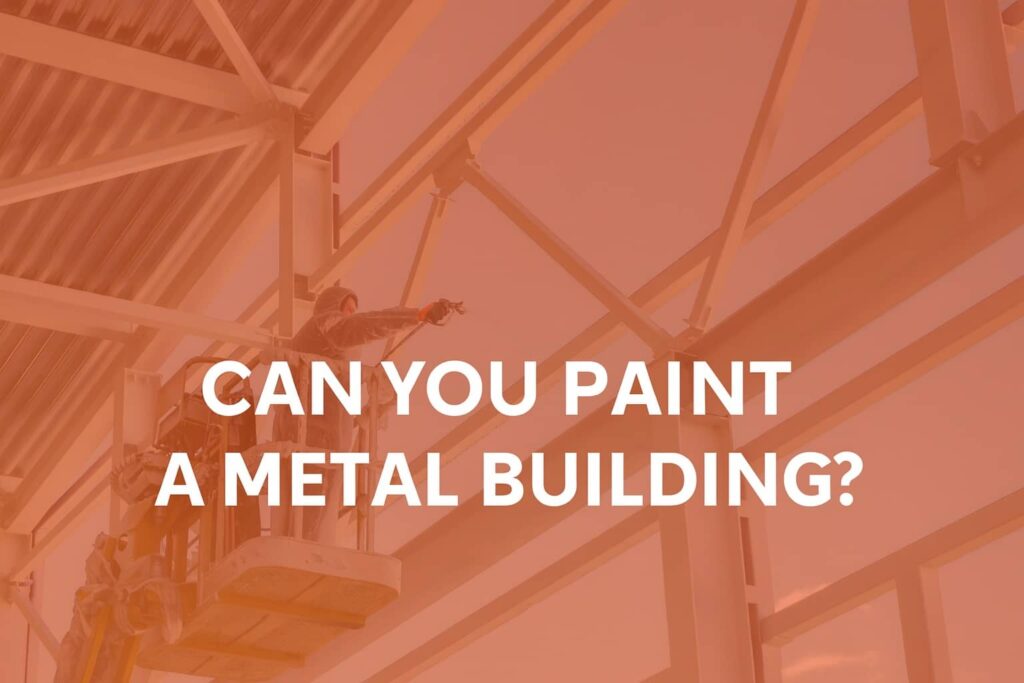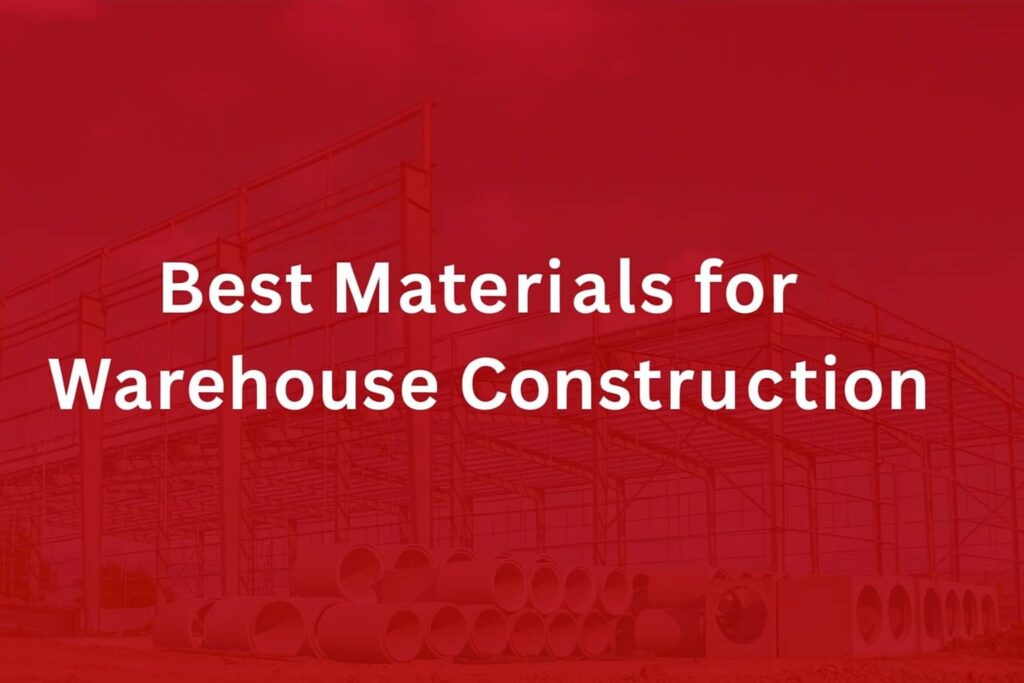How to Build a Metal Building: From Start to Finish
The construction of a metal building follows a systematic process beginning with research, planning, and design phases. Initial steps include evaluating project requirements, obtaining permits, and conducting site surveys. After site preparation and foundation work, the structural components are erected, followed by the installation of roofing, siding, and utility systems. Each phase requires strict adherence to building codes and safety regulations. Proper execution of these sequential steps guarantees a successful, long-lasting structure.
Concept Overview
- Begin with thorough planning, including site surveys, soil tests, and obtaining necessary permits before construction starts.
- Prepare the construction site by clearing, grading, and installing a proper concrete foundation with anchor bolts for structural support.
- Erect the main structural steel components using cranes and skilled labor, following manufacturer specifications and safety protocols.
- Install roof and wall panels systematically, ensuring proper sealing and insulation to protect against weather elements.
- Complete final inspections, obtain occupancy permits, and gather all warranty documentation before the building transfers to the owner.
1. Research and Planning Phase
The initial research and planning phase of how to build a metal building requires a thorough evaluation of the project’s purpose, spatial requirements, and intended functionality. Local building codes and zoning regulations must be examined while necessary property surveys and geotechnical soil testing are obtained to ascertain site suitability. Based on these findings, determine an appropriate budget, secure financing, and select between pre-engineered or custom design options that align with project specifications.
Determine building purpose and requirements
Determining a metal building’s purpose and requirements is the first step in any successful construction project. This phase analyzes specific usage needs, occupancy requirements, and spatial configurations. Key considerations include operational functions, equipment specifications, storage capacities, workflow patterns, and future expansion possibilities. Environmental factors such as climate conditions and local restrictions must likewise be evaluated.
Research local building codes and zoning laws
Researching local building codes and zoning laws is a fundamental legal requirement before initiating any metal building construction project. The process involves reviewing municipal ordinances, height restrictions, setback requirements, and permitted land uses. Furthermore, builders must verify compliance with structural specifications, wind load requirements, snow load calculations, and fire safety regulations mandated by local jurisdictions.
Obtain property surveys and soil tests
Since accurate site information forms the foundation of any successful metal building project, obtaining thorough property surveys and soil tests represents a critical initial step in the construction process. Professional surveyors determine property boundaries, elevation changes, and existing utilities, while geotechnical engineers conduct soil tests to assess bearing capacity, moisture content, and potential subsurface issues that could affect foundation design.
Calculate budget and secure financing
Accurately calculating project costs and securing appropriate financing are crucial cornerstones for any metal building construction project. This phase requires a detailed estimation of materials, labor, permits, site preparation, and contingency costs. Project managers must then approach lending institutions with thorough documentation, including construction plans, cost breakdowns, and projected revenue models, to secure the necessary funding.
Choose between pre-engineered or custom design
Choosing between pre-engineered and custom-designed metal buildings represents a pivotal decision point in the construction planning process. Pre-engineered options offer standardized components, faster delivery times, and typically lower costs. Custom designs provide flexibility for unique architectural requirements, specific load configurations, and specialized building features, though they usually require longer lead times and higher investments.
Select building size and features
After determining whether to use pre-engineered or custom design, selecting the appropriate building size and features requires a systematic analysis of several key factors. These include operational space requirements, future expansion possibilities, equipment clearances, storage needs, and workflow patterns. Critical features encompass door dimensions, ventilation systems, lighting configurations, load-bearing requirements, and vital utility connections.
2. Design Phase
The design phase begins with hiring qualified architects and engineers specializing in metal building construction. These professionals create preliminary designs and develop detailed construction drawings that specify structural components, dimensions, materials, and building systems. The completed plans undergo permit review, where feedback-driven revisions guarantee compliance with local building codes before final approval is granted.
Hire architect/engineer
Selecting a qualified architect or engineer is a crucial early decision in the design of the metal building. The chosen professional must possess expertise in metal building systems, structural engineering, and local building codes. They should demonstrate a proven track record of successful metal building projects and maintain proper licensing and professional liability insurance.
Create preliminary designs
Once an architect or engineer has been retained, preliminary designs establish the foundational concept for the metal building project. These initial sketches and drawings outline basic structural elements, spatial relationships, and intended functionality. The preliminary design phase incorporates client requirements, budget constraints, site conditions, and building codes to create conceptual layouts that guide subsequent detailed construction drawings.
Develop detailed construction drawings
Detailed construction drawings transform preliminary designs into thorough technical documents that guide the metal building’s construction process. These drawings include precise specifications for structural components, dimensions, materials, connections, and assembly sequences. They likewise incorporate electrical layouts, plumbing systems, HVAC details, and foundation requirements while ensuring building codes and engineering standards compliance.
Submit plans for permit approval
Submitting construction plans to local authorities marks a fundamental step in the metal building approval process. Building departments review structural calculations, site plans, elevations, and mechanical systems to ascertain compliance with local codes. Officials examine dimensions, load requirements, fire safety measures, and zoning restrictions before granting construction permits, often requiring multiple reviews and revisions.
Make revisions based on feedback
Addressing feedback from building department officials requires systematic modifications to construction plans and documentation. The revision process involves analyzing each comment, consulting with architects and engineers, updating drawings, and recalculating specifications as needed. All changes must be clearly marked, tracked, and resubmitted with supporting documentation to demonstrate compliance with local building codes and regulations.
Obtain final permits
Securing final building permits represents a crucial milestone in the design phase of metal building construction. After incorporating all required revisions and modifications, contractors submit updated plans to local authorities for final review. The approval process verifies compliance with building codes, zoning regulations, and safety standards. Once obtained, these permits authorize the commencement of actual construction activities.
3. Pre-Construction Phase
The pre-construction phase requires careful selection of a qualified general contractor who possesses experience with metal building systems and can effectively coordinate multiple subcontractors. Crucial early steps include obtaining thorough construction insurance coverage and establishing a detailed timeline that accounts for material delivery schedules and utility connection arrangements. The contractor must coordinate with local utility companies to guarantee proper electrical, water, and sewage connections while scheduling the delivery of structural steel components and other building materials to align with the construction sequence.
Select general contractor
Selecting a qualified general contractor represents a critical decision point in steel building construction. The process involves evaluating contractors’ experience with metal buildings, verifying licenses and insurance, checking references, and reviewing past projects. Key considerations include the contractor’s safety record, financial stability, subcontractor relationships, and ability to meet project timelines and budget requirements.
Obtain construction insurance
Thorough construction insurance coverage represents a crucial safeguard during metal building construction projects. Key policies include builder’s risk insurance, general liability coverage, and workers’ compensation. Additional coverage typically encompasses equipment protection, professional liability, and property damage. Contractors must verify adequate coverage limits and ascertain all subcontractors maintain proper insurance documentation.
Schedule delivery of materials
Coordinating material delivery schedules requires precise timing and detailed logistical planning to guarantee construction efficiency and prevent costly delays. Contractors must sequence deliveries to align with construction phases, ensuring steel components, fasteners, panels, and auxiliary materials arrive when needed. Site storage capacity, weather conditions, and crane availability all create an ideal delivery timeline.
Arrange for utility connections
Establishing essential utility connections before construction begins requires careful planning and coordination with local service providers for power, water, gas, and telecommunications infrastructure. Contractors must submit detailed site plans, obtain necessary permits, schedule utility company inspections, and determine connection points. Temporary construction power and water access must also be arranged to support building operations during the construction phase.
Establish construction timeline
Creating a detailed construction timeline represents a critical pre-construction activity that maps out the entire project’s sequence of operations, key milestones, and expected completion dates. The timeline incorporates weather considerations, material delivery schedules, subcontractor availability, and mandatory inspection points. Project managers utilize scheduling software to track dependencies, allocate resources, and identify potential bottlenecks in the construction process.
Secure necessary equipment rentals
The successful construction of a metal building requires an all-encompassing equipment rental strategy that addresses both immediate and long-term project needs. Crucial rentals typically include forklifts, aerial work platforms, welding machines, generators, cranes, and scaffolding. Contractors must secure these items well in advance, ensuring proper sizing, availability, and compliance with project specifications and safety requirements.
4. Site Preparation
The site preparation phase begins with clearing vegetation and grading the terrain to achieve the metal building project’s proper elevation and drainage requirements. Critical measures include installing erosion control systems, such as silt fences and sediment basins. Foundation excavation and the installation of underground utilities like water, sewer, and electrical connections follow. Access roads and staging areas must be established to enable the movement of construction equipment and material delivery throughout the building process.
Clear and grade the site
Clearing and grading the site establishes proper ground conditions and elevation requirements for the metal building project before construction can begin. The process involves removing vegetation, trees, rocks, and debris from the construction area. Heavy equipment operators then level the ground, create appropriate slopes for drainage, and compact the soil to meet load-bearing specifications.
Install erosion control measures
Proper erosion control measures must be installed during site preparation to prevent soil displacement and protect the construction site and surrounding areas from water damage and environmental impact. Common measures include silt fences, straw bales, sediment basins, erosion control blankets, and temporary diversion channels. Local regulations typically dictate specific requirements for erosion control execution.
Excavate for foundation
Foundation excavation marks a major advancement in the site preparation process following proper erosion control implementation. According to architectural plans, the excavation team uses calibrated equipment to dig to the specified depth. This phase requires precise measurements and careful attention to soil conditions, ensuring proper depth and width for footings and foundation walls.
Install underground utilities
Underground utility installation represents a critical phase of site preparation, requiring careful coordination among various contractors and utility providers. The process involves laying crucial service lines for water, sewage, electricity, gas, and telecommunications. Contractors must follow precise depth requirements, maintain proper spacing between utilities, and install necessary conduits while adhering to local building codes and safety regulations.
Create access roads if needed
When construction sites lack adequate vehicle access, temporary or permanent access roads must be constructed to move heavy equipment, delivery vehicles, and construction personnel. These roads typically require a stable base of compacted gravel or crushed stone, proper grading for drainage, and sufficient width to accommodate large vehicles. Geotextile fabric may be installed beneath the road base to prevent soil mixing.
Set-up construction staging area
Construction staging areas serve as organized hubs for managing materials, equipment, and personnel during the building process. These designated zones should be strategically positioned to minimize transportation distances while maintaining site safety. The areas typically include secured storage for tools and materials, equipment parking spaces, temporary office facilities, and waste collection points. Proper layout guarantees efficient workflow throughout construction.
5. Foundation Work
The foundation work for a metal building begins with the installation of footings and pouring of a reinforced concrete foundation designed to support the structure’s load requirements. Anchor bolts must be precisely positioned within the wet concrete according to engineered specifications, followed by a mandatory curing period of typically 28 days to achieve maximum strength. Once cured, the foundation requires thorough waterproofing treatment to prevent moisture infiltration and guarantee long-term structural integrity.
Install footings
Installing proper footings is a critical first step in the foundation work phase of metal building construction. The process involves excavating to the required frost depth, creating formwork, installing steel reinforcement bars, and pouring concrete according to engineered specifications. The footings distribute the building’s load evenly into the ground, preventing structural settlement or instability.
Pour concrete foundation
Pouring a concrete foundation represents a pivotal stage in metal building construction that occurs after the footings have adequately cured. The process involves placing forms, installing reinforcement bars, and ensuring proper elevation grades. Concrete is then poured continuously to prevent cold joints, typically using ready-mix concrete delivered by truck. The surface is finished to specifications and protected during the curing period.
Install anchor bolts
Since proper anchoring forms the critical connection between a metal building’s foundation and its structural framework, anchor bolts must be precisely positioned and embedded during the concrete foundation installation phase. The contractor uses engineered specifications to place anchor bolt patterns, ensuring proper depth, projection height, and alignment. Each bolt requires template positioning and secure bracing before concrete placement.
Allow proper curing time
The proper curing time for a concrete foundation represents a critical phase that typically spans 7-28 days, depending on environmental conditions and concrete specifications. During this period, concrete develops its designed strength through hydration. Maintaining ideal moisture levels and temperature control is crucial. Contractors must prevent premature drying, protect against extreme weather, and regularly monitor the curing process using standardized testing methods.
Waterproof foundation
Proper foundation waterproofing is a crucial barrier against moisture infiltration, preventing potential structural damage and interior water issues. The process involves applying specialized membranes or coatings to the exterior foundation walls. Contractors typically use either sheet membranes, liquid-applied materials, or crystalline waterproofing systems, extending from the footings to slightly above grade level.
Install drainage systems
Building upon waterproofing measures, drainage systems form an integrated defense against water damage and foundation stress. The installation process involves positioning perforated drain pipes around the foundation’s perimeter, connecting them to a collection point, and surrounding them with gravel. A filter fabric barrier prevents soil infiltration, allowing water to flow through the system effectively.
6. Steel Building Assembly
The steel building assembly phase begins with a thorough inventory of delivered components to guarantee all necessary materials are present and properly organized. The construction team then erects the main support columns, which provide the primary vertical structure, followed by installing roof beams and purlins to create the overhead framework. Wall girts and strategic bracing are attached to complete the building’s structural skeleton and provide critical stability against lateral forces.
Receive and inventory steel components
Carefully receiving and inventorying steel components marks the critical first step in metal building assembly. Upon delivery, contractors must verify that all structural elements match the bill of materials, checking for proper quantities, sizes, and specifications. Each component requires inspection for damage, proper coating, and conformity to engineering specifications before being strategically staged for an efficient assembly sequence.
Erect main support columns
Once steel components have been verified and staged, erecting primary support columns begins the vertical assembly phase. Construction crews utilize cranes to position the columns precisely on anchor bolts embedded in the foundation. Workers plumb and level each column using shims and temporary bracing before tightening anchor bolt nuts. Laser levels guarantee proper alignment and verticality of columns throughout the structure.
Install roof beams and purlins
Following the erection of support columns, construction crews hoist primary roof beams into position using heavy-duty cranes and connect them to the column tops according to engineering specifications. Purlins are then installed perpendicular to the main beams at specified intervals, creating a structural framework that provides crucial lateral support and is the mounting surface for roof panels.
Attach wall girts
Wall girts, horizontal structural members that span between columns, are installed in precise alignment after the primary beam and purlin framework are completed. Construction crews attach these secondary framing components perpendicular to the columns using specified fasteners and spacers. The girts provide lateral support for wall panels and improve the building’s structural integrity while transferring wind loads to the main framework.
Install bracing
The diagonal bracing installation is a vital stabilizing component in the metal building’s structural system. Cross bracing prevents lateral movement and transfers wind loads through the structure to the foundation. Installers systematically attach diagonal steel cables or rigid rods between columns and rafters, ensuring proper tension and alignment. All connections must meet specified torque requirements and engineering specifications.
Bolt/weld connections
Every connection point in a metal building’s frame requires precise bolt tightening or welding to guarantee structural integrity. Technicians must follow manufacturer specifications for proper torque values when installing high-strength bolts. Certified welders perform continuous or intermittent welds for welded connections according to structural drawings, ensuring each joint meets load-bearing requirements and building codes.
7. Exterior Completion
After completing the steel frame assembly, exterior completion begins with the systematic installation of roof and wall panels in accordance with manufacturer specifications. Critical components such as doors, windows, gutters, and downspouts are fitted precisely to guarantee proper building functionality and water management. The final exterior steps include applying industrial-grade sealants and caulking at all joints and seams to create a weathertight building envelope.
Install roof panels
Installing roof panels represents a critical phase in metal building construction that requires careful planning and precise execution. The process begins at the eave and progresses toward the ridge, with each panel properly overlapped and secured. Workers must install closure strips, fasteners, and foam insulation between panels while ensuring proper alignment and watertight seals at all connection points.
Attach wall panels
Wall panel attachment follows a systematic sequence that begins at a building corner and progresses horizontally along the structure’s perimeter. Workers secure panels using self-drilling fasteners at specified intervals, ensuring proper overlap and alignment. The installation includes vapor barriers, insulation, and thermal blocks between panels and girts. Proper joint sealing prevents moisture infiltration and maintains building envelope integrity.
Install doors and windows
Proper door and window installation begins with precise frame placement within the rough openings of the metal building structure. Installers secure the frames using manufacturer-specified fasteners and shims to guarantee perfect alignment. After verifying plumb and level conditions, workers install flashing, weatherstripping, and thermal barriers before mounting the actual doors and windows. Final adjustments confirm smooth operation and proper sealing.
Apply sealants and caulking
Sealing a metal building requires the systematic application of high-grade sealants and caulking compounds at all exterior joints, seams, and penetration points. This vital step prevents water infiltration, air leakage, and moisture damage. Installers must apply weather-resistant silicone or polyurethane sealants around windows, doors, roof changes, panel overlaps, and fastener heads, ensuring complete coverage and proper adhesion.
Install gutters and downspouts
Mounting gutters and downspouts is an important phase in metal building construction. They control rainwater runoff and protect the foundation from water damage. Installation requires precise slope calculations, typically 1/4 inch per 10 feet of gutter run. Contractors secure hangers at specified intervals, attach end caps and outlets, and connect downspouts to direct water away from the structure’s base.
Complete exterior trim work
Finishing exterior trim work improves a metal building’s aesthetic appeal and weather resistance. This phase involves installing corner trim, eave trim, and rake trim to cover exposed edges and potential gaps. Installers secure metal flashings around windows, doors, and other openings while adding architectural elements like fascia covers and reveals according to design specifications.
8. Interior Work
The interior work phase of metal building construction encompasses critical mechanical and finish systems that make the structure functional. Licensed contractors install electrical wiring, plumbing lines, and HVAC ductwork according to building codes and specifications. After mechanical rough-ins are complete, contractors add insulation, frame interior walls, and install necessary partition systems to create usable interior spaces.
Install electrical systems
Installing electrical systems requires careful planning and sequential implementation following approved electrical drawings and local codes. The process involves mounting electrical panels, installing conduit runs, pulling wires, connecting outlets, switches, and lighting fixtures. Electricians must guarantee proper grounding, circuit protection, and load distribution while complying with National Electrical Code requirements and safety standards.
Add plumbing systems
Professional plumbers must systematically install water supply lines, drain pipes, vents, and fixtures according to approved plumbing plans and local building codes. The process includes connecting to the main water supply, installing waste lines with proper slope, positioning vent stacks through the roof, and mounting fixtures such as sinks, toilets, and water heaters.
Install HVAC
Skilled HVAC technicians begin the installation process by strategically placing heating, ventilation, and air conditioning components throughout the metal building according to engineered mechanical plans. They mount air handlers, install ductwork, connect condensing units, and establish zoning controls. The final steps include pressure testing the system, charging refrigerant lines, and calibrating thermostats to guarantee peak climate control performance.
Add insulation
Once the HVAC installation is complete, proper insulation teams begin installing thermal and acoustic barriers throughout the metal building. The process typically involves installing fiberglass batts or spray foam between wall girts and roof purlins, followed by a vapor barrier. Teams focus on key areas, including roof-wall junctions, door frames, and window openings, to guarantee maximum energy efficiency.
Complete interior walls
Interior wall construction begins with installing metal studs at specified intervals, typically 16 or 24 inches on center, attached to both the floor track and ceiling channel. Drywall sheets are then fastened to the studs using self-drilling screws. After taping and mudding the joints, contractors sand the surfaces smooth and apply corner beads to protect vulnerable edges.
Install flooring
Following the completion of wall finishes, flooring installation commences with thorough surface preparation of the concrete slab. The process involves moisture testing, surface grinding, and applying necessary primers or moisture barriers. Depending on specifications, installers then lay selected materials such as epoxy coatings, vinyl tiles, carpet, or specialized industrial flooring systems according to manufacturer guidelines.
9. Finishing Phase
The finishing phase marks the culmination of metal building construction with crucial tasks like applying protective paint coatings and installing permanent fixtures and equipment. Professional landscaping crews reshape the surrounding terrain while construction teams systematically remove temporary facilities and conduct thorough site cleanup operations. Completing these finishing elements transforms the construction zone into a polished, functional facility ready for final inspections and occupancy.
Paint/finish surfaces
Professional painters and finishers apply surface treatments once all construction dust has settled and surfaces have been properly cleaned and prepared. The process includes applying primer coats to metal surfaces, followed by industrial-grade paint systems designed for steel structures. Specialty coatings may be used to improve corrosion resistance, UV protection, and weather durability.
Install fixtures and equipment
Installing fixtures and equipment marks a critical stage in metal building completion, where permanent components are secured throughout the structure. This phase includes mounting lighting systems, installing specialized machinery, positioning workstations, securing storage units, and fastening safety equipment. Each fixture must be properly anchored according to manufacturer specifications and local building codes.
Complete landscaping
After completing interior fixtures and equipment installation, landscaping operations commence to establish proper drainage, improve site aesthetics, and guarantee environmental compliance. Contractors grade the surrounding terrain, install irrigation systems, and plant native vegetation. Strategic placement of trees, shrubs, and ground cover helps control erosion, provides shade, and meets local zoning requirements for green space.
Clean up the construction site
Thorough site cleanup marks a critical final stage in metal building construction, encompassing the systematic removal of debris, excess materials, and temporary structures. Contractors must remove construction waste, sweep all surfaces, and properly dispose of materials according to local regulations. Final cleaning includes power washing exterior surfaces, cleaning windows, and ensuring all work areas meet safety and cleanliness standards.
Remove temporary facilities
Dismantling temporary facilities marks a crucial step in completing a metal building project. This process removes construction trailers, temporary power connections, portable restrooms, and equipment storage containers. Contractors must guarantee proper disposal of temporary utilities, disconnect temporary electrical services, and restore any areas affected by these installations to their original condition.
Install security systems
Installing security systems represents an essential final component of metal building construction, encompassing both physical and electronic protective measures. The process involves mounting surveillance cameras, access control panels, motion detectors, and alarm systems. Technicians integrate these components with central monitoring stations, configure automated responses, and program user authentication protocols to guarantee thorough building security.
10. Final Steps:
The final steps of metal building construction require systematic completion of mandatory inspections and obtaining a certificate of occupancy from local authorities. A thorough punch list must be addressed to resolve any remaining construction deficiencies or incomplete items. The process concludes with proper documentation of warranties, maintenance requirements, and transfer of all building documentation to the owner through a final walkthrough.
Schedule inspections
Scheduling multiple inspections marks a critical milestone in completing a metal building project. These include structural inspections of the foundation, frame, and connections; mechanical inspections of HVAC, plumbing, and electrical systems; fire safety evaluations; and a final thorough inspection. Local building officials must verify compliance with codes and regulations before issuing approval.
Obtain a certificate of occupancy
Securing a certificate of occupancy represents the final regulatory approval required before a metal building can be legally occupied and used for its intended purpose. Local building officials conduct thorough inspections to verify compliance with building codes, safety regulations, and approved plans. This certification confirms that all systems, including electrical, plumbing, fire safety, and structural elements, meet the required standards.
Complete punch list items
Addressing punch list items involves systematically resolving any remaining deficiencies, repairs, or incomplete work identified during final inspections of the metal building. The contractor must document each item, assign responsible parties, establish completion deadlines, and verify that corrections meet specifications. Common punch list items include paint touch-ups, hardware adjustments, trim repairs, and proper operation of building systems.
Document warranties and maintenance requirements
During the final documentation phase, proper organization and filing of all warranty certificates and maintenance manuals is essential for the long-term operation of the metal building. Contractors must compile manufacturer warranties for structural components, roofing systems, and installed equipment. The documentation package should include detailed maintenance schedules, inspection requirements, and specific procedures for routine upkeep of building systems.
Hand over building documentation
The handover of building documentation represents a critical final step in the metal building construction process. This package includes as-built drawings, operation manuals, warranty certificates, maintenance schedules, material specifications, and inspection records. The contractor provides both digital and hard copies to the building owner, ensuring they have thorough documentation for future reference and building management requirements.
Conduct final walkthrough
Performing a final walkthrough marks the culmination of the metal building construction project, involving key stakeholders such as the building owner, contractor, architect, and relevant inspectors. During this critical inspection, participants systematically verify all building components, systems, and finishes meet specifications. They document any remaining issues, confirm safety compliance, and guarantee all operational systems function according to design parameters.
Request A Quote Today!




